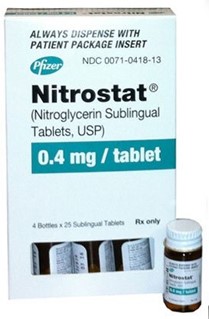A nurse is caring for a client who has had a hemorrhagic stroke following a ruptured cerebral aneurysm. Which of the following manifestations should the nurse expect?
History of neurologic deficits lasting less than 1 hr
Maintains consciousness
Manifestations preceded by a severe headache
Gradual onset of several hours
The Correct Answer is C
- A hemorrhagic stroke is a type of stroke that occurs when a blood vessel in the brain ruptures and bleeds into the surrounding tissue. A common cause of hemorrhagic stroke is a cerebral aneurysm, which is a weak or bulging spot in an artery wall. When an aneurysm ruptures, it causes sudden and severe bleeding in the brain, which can damage brain cells and increase intracranial pressure. Symptoms of a hemorrhagic stroke include a sudden and severe headache, often described as "the worst headache of my life", followed by neurologic deficits, such as weakness, numbness, vision loss, speech problems, confusion, or loss of consciousness
- The other options are not correct because:
- History of neurologic deficits lasting less than 1 hr. This statement is incorrect because it describes a transient ischemic atack (TIA), which is a temporary interruption of blood flow to the brain that causes brief neurologic symptoms that resolve within 24 hours. A TIA is often a warning sign of an impending ischemic stroke, which is a type of stroke that occurs when a blood clot blocks an artery in the brain and reduces blood flow to the affected area.
- Maintains consciousness. This statement is incorrect because most clients with hemorrhagic stroke lose consciousness or have altered mental status due to the increased intracranial pressure and brain damage caused by the bleeding. The level of consciousness depends on the location and extent of the hemorrhage, but it usually deteriorates rapidly.
- Gradual onset of several hours. This statement is incorrect because hemorrhagic stroke usually has a sudden onset, unlike ischemic stroke, which may have a gradual onset over several hours or days. The onset of hemorrhagic stroke is often associated with physical exertion, emotional stress, or hypertension, which can increase the risk of aneurysm rupture.
Nursing Test Bank
Naxlex Comprehensive Predictor Exams
Related Questions
Correct Answer is C
Explanation

Correct Answer is A
Explanation
A. The radial pulse in the left arm can be palpated after a cardiac catheterization with a left antecubital insertion site. Although the focus is typically on the site of insertion and the brachial pulse, the radial pulse in the left arm can still provide useful information about circulation in that limb.
B. The radial pulse in the right arm is not pertinent because the catheterization was performed on the left side.
C. The brachial pulse in the left arm is indeed important to assess, but palpating the radial pulse in the left arm is also valid to check for circulation.
D. The brachial pulse in the right arm is not relevant in this scenario, as it does not relate to the site of catheterization.
Whether you are a student looking to ace your exams or a practicing nurse seeking to enhance your expertise , our nursing education contents will empower you with the confidence and competence to make a difference in the lives of patients and become a respected leader in the healthcare field.
Visit Naxlex, invest in your future and unlock endless possibilities with our unparalleled nursing education contents today
Report Wrong Answer on the Current Question
Do you disagree with the answer? If yes, what is your expected answer? Explain.
Kindly be descriptive with the issue you are facing.
